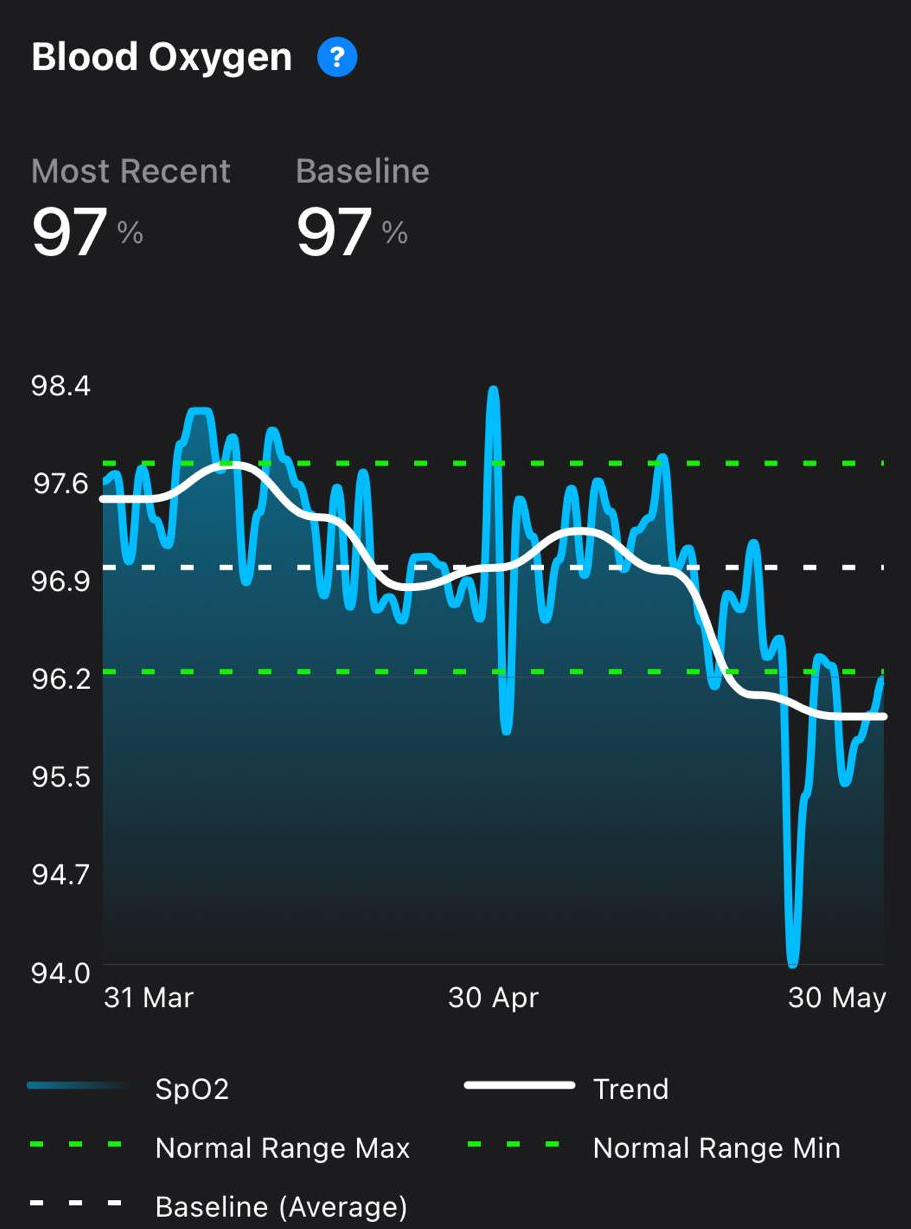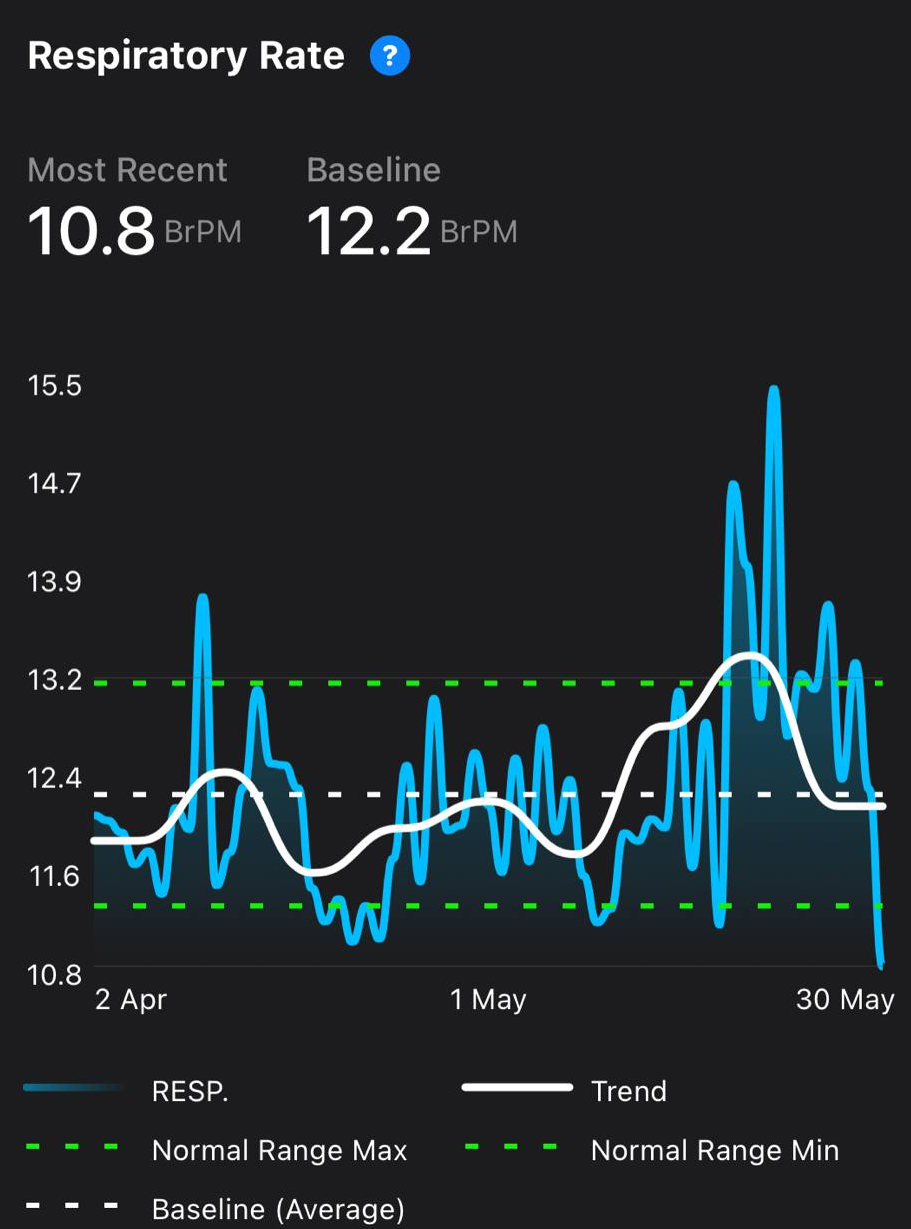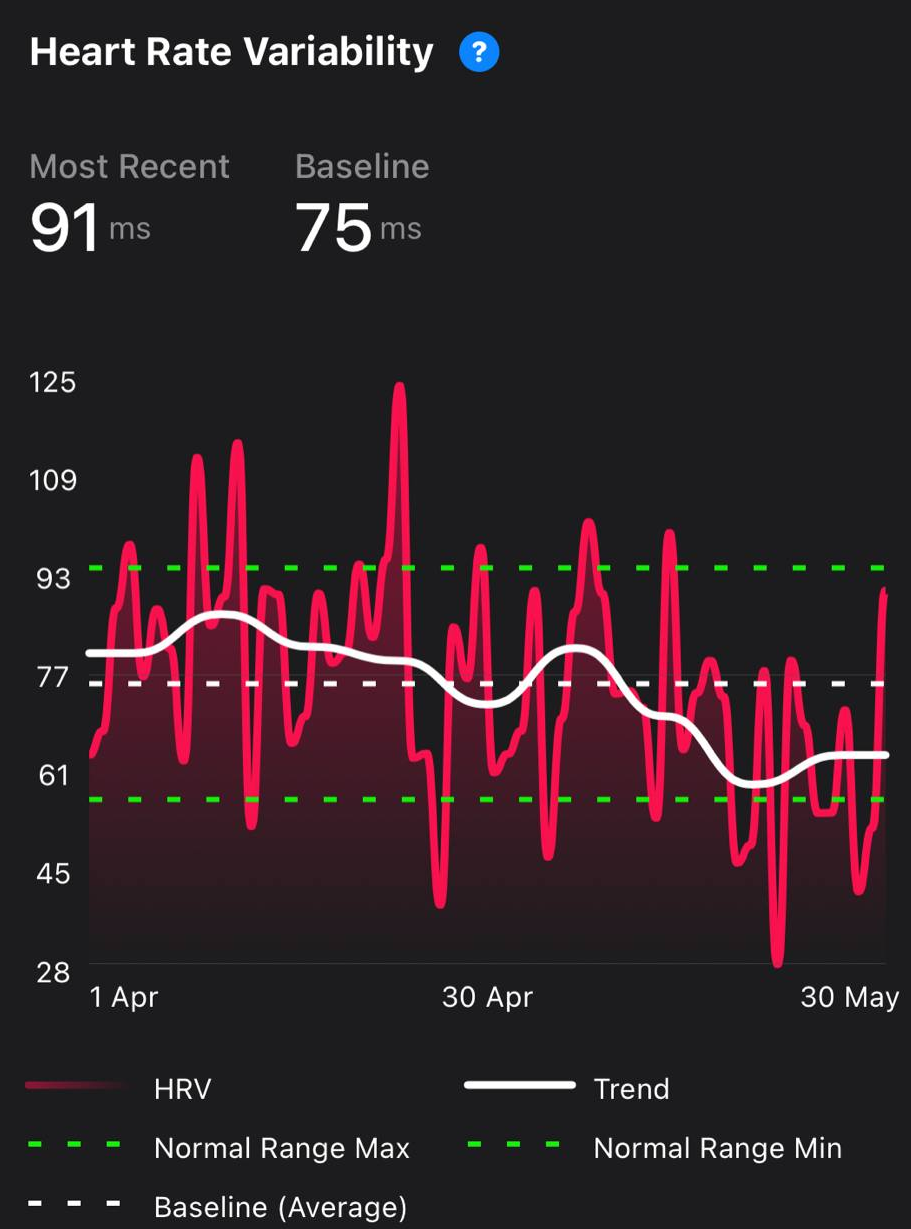I got sick and Apple Watch agrees!
You might have heard of the incredible features that an Apple Watch offers, including its numerous sensors. Perhaps you’ve even watched a video or two about an Apple Watch saving lives. Although it didn’t save mine – thankfully, I didn’t need it to – it might have noticed that I was sick, providing a glimpse into its capabilities and potential future advancements. Let me explain.
During my trip to Ireland in May, I started feeling slightly unwell. I experienced symptoms such as a sore throat and a mild cough. Once I returned home, my condition significantly deteriorated. I developed fever and felt extremely unwell. I consulted a doctor, who prescribed antibiotics for me. Although I felt better for a few days, my health soon worsened again. After two visits to the emergency room, where I received IV fluids and medications, I gradually managed to recover. The diagnosis was a viral infection, and I was informed that it would likely take a couple of weeks to fully recuperate. Here we are, end of May, and I’m still not 100% back to normal. I’m still feeling tired.
What about the Apple Watch?
Now that we’ve examined the highlights of my incredible May 2023, let’s analyze some data that my Apple Watch captured.
Blood Oxygen Levels
Below, you’ll find the wrist temperature data it recorded. It’s crucial to note that the actual numbers aren’t as important, since they will differ from general body temperature readings. What truly matters is the trend.
You can clearly see that the temperature remained relatively stable until the end of May, at which point it spiked. Focusing on the actual values, you’ll observe that the difference is only about 0.2°C. Nonetheless, I find this trend shift fascinating, especially considering these values were measured by a watch on my wrist!

Blood Oxygen Levels
Next, let’s examine the blood oxygen data. It was during the third week of May when I started experiencing wheezing in my chest. Taking a deep breath became difficult, and I couldn’t walk for more than 5 minutes without feeling out of breath. Can you see the blood oxygen level dropping in the chart below? I can, and so did my Apple Watch.

Respiratory Rate
Here is another metric: the respiratory rate. You can observe the increase at the end of May. Lower oxygen levels in the blood result in increased breathing, which makes sense.

Resting Heart Rate
Another indication of potential sickness is an increase in resting heart rate. An elevated resting heart rate can signal the body’s response to fight off infection, as it tries to support immune system functions. You can see the overall increase during May in the chart below.

Heart Rate Variability (HRV)
Finally, heart rate variability (HRV) is another metric that can be related to infection detection, as it reflects the continuous interaction between the sympathetic and parasympathetic branches of the autonomic nervous system, as well as the inflammatory response. A decrease in HRV can be associated with an increase in inflammation. You can see the decrease in HRV at the end of May in the chart below.

What does this all mean?
While my personal experience should not be taken as medical evidence, it does showcase how an Apple Watch can track health data that might be related to illness or infection. As you can see from the graphs above, the wrist temperature, blood oxygen levels, respiratory rate, resting heart rate, and heart rate variability all displayed noticeable changes during the course of my illness. These changes are consistent with various indicators of infection, making the Apple Watch a potentially useful tool in flagging early signs of health issues. With that said, Apple still leaves it’s implementation at a data aggregation level and does not create actionable insights.
What’s next?
As wearable technology continues to evolve and become more sophisticated, I believe devices like the Apple Watch will play an increasingly crucial role in monitoring and maintaining health. The potential for such devices extends beyond detecting signs of infections, as they could contribute to preventative care – identifying health risks, tracking behavioral patterns, and encouraging users to make lifestyle changes that can positively impact their well-being.
My experience illustrates how an Apple Watch can provide valuable insights about one’s health through multiple metrics. Although the watch does not yet offer actionable insights or direct integration with healthcare professionals, the potential for such advancements is enormous. Wearable devices are continuously advancing, and we can expect the future to hold even greater benefits when it comes to health monitoring and personal well-being. It will be interesting to see how these devices evolve over time and what new features they will offer. For now, it is fun to look back into data points and hope for a future where these devices can provide actionable insights.
References
- Association of heart rate variability and inflammatory response in patients with cardiovascular diseases: current strengths and limitations
- Heart rate time series characteristics for early detection of infections in critically ill patients
- Pulse oximetry in the evaluation of the severity of acute asthma and/or wheezing in children
- Respiratory rate as an indicator of acute respiratory dysfunction